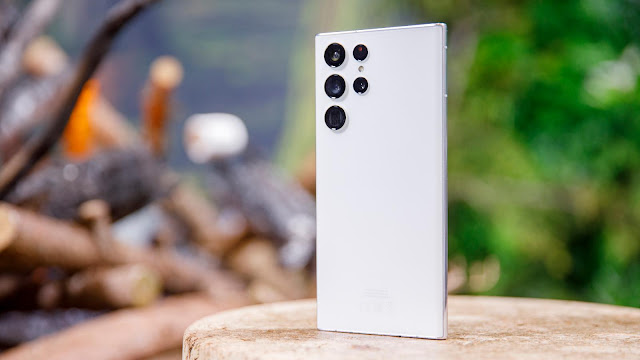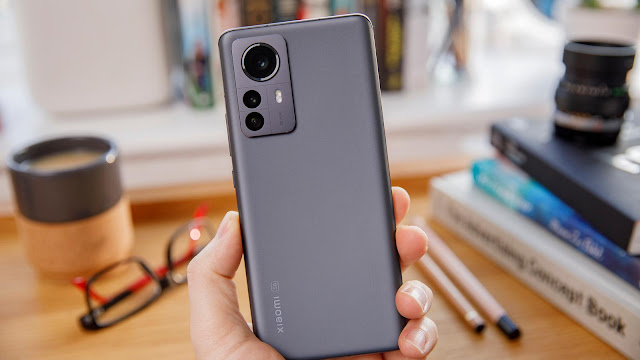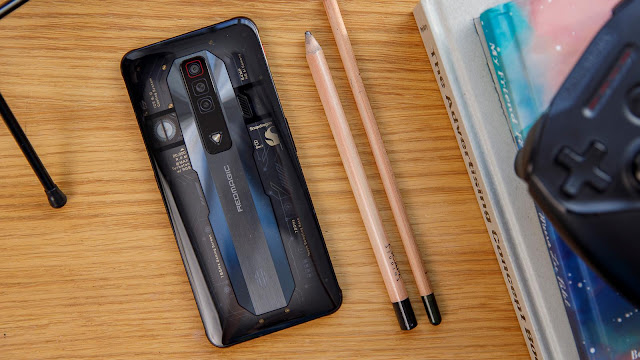Phones used to be small – the first iPhone only had a 3.5in display, which today looks comically tiny. 2021’s iPhone 13 Pro Max sports a whopping 6.7in display and it isn’t the only phone with a sizeable screen. In fact, Apple was relatively late to the big phone party.
You may have heard the term ‘phablet’, which is a portmanteau of ‘phone’ and ‘tablet’. If you’re anything like us, you might also prefer to use a large-screened phone all the time, instead of having to resort to a tablet for specific situations.
1. Samsung Galaxy Z Fold 3
- Great for multitasking
- Water resistant design
- Consistent cameras
Cons
- Some apps require manual optimisation
- Terrible UDC
- Cumbersome
Aspect ratio: 22.5:18
There are a host of refinements that the Galaxy Z Fold 3 lords over its predecessor; with a cleaner, hardier design that somehow integrates water resistance, an expanded feature set (including S Pen support) and a lower starting price.
While processing, gaming and camera performance may not be industry-leading, the Samsung Galaxy Z Fold 3 focuses on making the foldable concept more attainable without presenting any real sacrifices in a particular area.
What the Fold 3 does highlight within this burgeoning product category, however, is that building experiences for folding form factors is hard and right now, Samsung is the principal driving force behind that getting any easier.
Read our full Samsung Galaxy Z Fold 3 review
2. Samsung Galaxy S22 Ultra
- Excellent camera
- Phenomenal display
- Integrated stylus
Cons
- Bulky
- Expensive
- Sluggish charging
Aspect ratio: 19.3:9
While the S21 Ultra dabbled with Note-like features, the Galaxy S22 Ultra is unquestionably a full-blown successor to 2020’s Note 20 Ultra in everything but name.
The design is distinctly different from the other entries in the Galaxy S22 range (which is to say very ‘Note-like’) and features an integrated S Pen stylus that expands functionality beyond most rivals, especially in terms of productivity.
Despite familiar-looking camera hardware, the upgrades made by Samsung render it one of the best systems in any phone right now; with a 108Mp main shooter backed up by an ultrawide and two telephoto lenses at different zoom levels – with the zoom performance particularly improved on previous models.
The expansive 6.8in LTPO AMOLED display delivers both high WQHD+ resolution and an adaptive refresh rate up to 120Hz, while long-term software support that surpasses even Google’s Pixels rounds out an impressive list of pros.
Read our full Samsung Galaxy S22 Ultra review
3. Google Pixel 6 Pro
- Stunning 120Hz display
- Superb cameras
- Slick OS
- Greatly improved battery life
Cons
- Biggest, thickest, heaviest Pixel yet
- Awkward fast charging
- Display could be brighter
Screen size: 6.7in
Aspect ratio: 19.5:9
Google shook things up for 2021, with the Pixel 6 and Pixel 6 Pro debuting the company’s new Tensor silicon and a refreshed Android 12 experience, along with a completely new design and some significantly enhanced cameras.
Despite dropping the ‘Pixel XL’ naming convention a couple of generations back, the 6 Pro is an undeniably sizeable phone, with a stunning QHD+ curved-edge OLED that – for the first time in the series – makes the move to a higher 120Hz smooth refresh rate (just like its direct rivals in the iPhone 13 Pro range).
The camera system also relies on a new 50Mp main sensor, which packs astounding dynamic range and showcases smart new features, like Magic Eraser and rock-solid Face Unblur. It’s also backed up by both a 12Mp ultrawide and a periscopic 48Mp telephoto camera, with a 4x optical zoom; a far cry from the Pixel range’s old single-sensor approach to photography.
Tensor doesn’t benchmark well against the competition but in real-world use offers more than enough grunt to handle the most demanding mobile apps and games, while also boasting a specialised skill set for machine learning and AI tasks that rival silicon lags behind in.
A huge 5003mAh battery also ensures some of the best battery life on a Pixel ever, even if fast charging is a bit of a mess.
Read our full Google Pixel 6 Pro review
4. iPhone 13 Pro Max
- Amazing performance
- Great battery life
- Beautiful display
Cons
- Charging/MagSafe are messy
- iOS underutilises big screen
Screen size: 6.7in
Aspect ratio: 19.5:9
Aspect ratio: 19.5:9
The iPhone 13 Pro Max boasts the same display size and resolution as its predecessor, but with one major upgrade: it now supports 120Hz tech (which Apple calls ‘ProMotion’), finally bringing it in line with Android rivals.
The wider aspect ratio Apple adopted means that while some Android devices have bigger displays on paper, few feel as big as this, especially once you factor in the squared off sides. That means the 13 Pro Max is a decidedly two-handed device, but those who relish the extra screen space will love it.
Otherwise, you get all the top specs you’d expect from the latest Apple flagship, along with a welcome upgrade to battery life that finally makes the most of the space for a truly multi-day device.
Read our full Apple iPhone 13 Pro Max review
5. Oppo Find X5 Pro
- Best-in-class display
- Versatile cameras
- Unique design
Cons
- No periscopic zoom
- Expensive
Aspect ratio: 20:9
The Oppo Find X5 Pro is a phenomenal phone by any measure. The 6.7in 10-bit 120Hz QHD+ panel is one of the best displays in any phone right now and Oppo backs it up with 80W wired and 50W wireless charging, a 5000mAh battery, and a top-tier camera that boasts 50Mp sensors on both the main and ultrawide lenses.
You’ll have to live without a periscopic zoom lens – the telephoto here is a measly 2x zoom – but results across all three rear lenses are exceptional. The design is unique too, thanks to a seamlessly sloped camera module built right into the ceramic of the phone’s body.
In terms of pure performance, the Find X5 Pro is also hard to beat, with all of the above, plus a Snapdragon 8 Gen 1 chip, 256GB storage and 12GB RAM. You just have to be willing to pay the price, as it doesn’t come cheap.
Read our full Oppo Find X5 Pro review
6. Xiaomi 12 Pro
- Nice design
- Excellent display
- Strong cameras
- Fast 120W charging
Cons
- Disappointing battery life
- No IP rating
Screen size: 6.73in
Aspect ratio: 20:9
The Xiaomi 12 Pro has an awful lot going for it, but that’s coupled with a pair of major flaws.
It sports a sleek, understated design, there’s a beautiful display paired with a quad-speaker setup and the Snapdragon 8 Gen 1 chip delivers impressive performance. For the most part, the camera system is great too, not quite best-in-class but good.
Unfortunately, the battery life is a clear failing – which might be fixed with updates, but for the moment frustrates.
Read our full Xiaomi 12 Pro review
7. Xiaomi 11T
- Fast performance
- Great main camera
- Nice display
Cons
- MIUI still iffy
- Middling telephoto & ultrawide cameras
- No IP rating
Screen size: 6.67in
Aspect ratio: 20:9
A mid-range reworking of Xiaomi’s Mi 11 flagship from the start of 2021, the 11T sports a similar top-tier Snapdragon 888 chipset and other highlights, like a strong lead 108Mp camera, but all at a considerably lower price.
It lacks the astounding 120W super-fast charging of its ‘Pro’-branded sibling but still supports rapid 67W speeds that aren’t to be sniffed at.
The 6.67in 120Hz Full HD+ AMOLED display comes protected by Gorilla Glass Victus, while a 480Hz touch response rate and stereo speakers mean the 11T is also great for gaming.
Read our full Xiaomi 11T review
8. Nubia Red Magic 7
- Outstanding performance
- 165Hz refresh rate display
- Greatly improved cameras
Cons
- Clunky user experience
- Bulky design
- Disappointing battery life
Screen size: 6.8in
Aspect ratio: 20:9
While only a minor update to the Red Magic 6S Pro from 2021, the Red Magic 7 pushes the envelope by being one of the first gaming phones to feature Qualcomm’s latest Snapdragon 8 Gen 1 chipset.
The stunning 165Hz display endures from the last few Red Magic flagships, while also continuing to outpace mainstream rivals – making it ideal for gaming – and Nubia’s finally addressed camera performance too, which is better than it’s ever been.
The Red Magic 7’s Android launcher won’t be to everyone’s tastes, the move to a smaller battery has proven to be a detrimental change (especially for gaming phone) and this is still a big bulky device, but the price/performance balance it strikes and the gaming prowess it facilitates are unrivalled.
Read our full Red Magic 7 review
9. Motorola Moto G200
- Super-smooth display
- Great performance
- Affordable mid-ranger
Cons
- LCD not OLED display tech
- Limited OS updates
Screen size: 6.8in
Aspect ratio: 20:9
The Moto G200 is something of an outlier in Motorola’s affordable mid-range Moto G line, but the oddities that make it stand out also happen to be its greatest strengths.
One of the few devices rocking a Qualcomm Snapdragon 888+ that delivers flagship-class performance on a budget, while its expansive 6.8in display offers super-smooth 144Hz visuals, making it ideal for gaming, while Ready For support also affords you a desktop-like user experience when plugging into an external display.
A sizeable 5000mAh battery also ensures great battery life and 33W fast charging ensures you’re not left waiting for the phone to fill back up for hours at a time.
Read our full Motorola Moto G200 review
10. Sony Xperia 1 III
- Superb performance
- Best-in-class audio
- Versatile cameras
Cons
- Underwhelming longevity
- Display could be brighter
- Pricey
Screen size: 6.5in
Aspect ratio: 21:9
The Xperia 1 III offers up more of what we’ve come to know and love from Sony’s flagship phone line: namely a killer camera setup and an eye-popping 4K display.
The big upgrade for 2021 was the move to 120Hz, which joins a smattering of cutting-edge display technologies, including 4K resolution, an HDR OLED panel and an uncommon 21:9 aspect ratio that’s brilliant for enjoying movies on the go.
The rear camera setup takes work to get the most out of it but offers unprecedented control, especially with regards to video capture, while the pairing of a Snapdragon 888 chip and 12GB of RAM delivers some of the best performance for an Android phone out there.
Battery life and price are the main things holding the 1 III back from true greatness but for some, it’s the obvious choice.
Read our full Sony Xperia 1 III review












0 comments:
Post a Comment